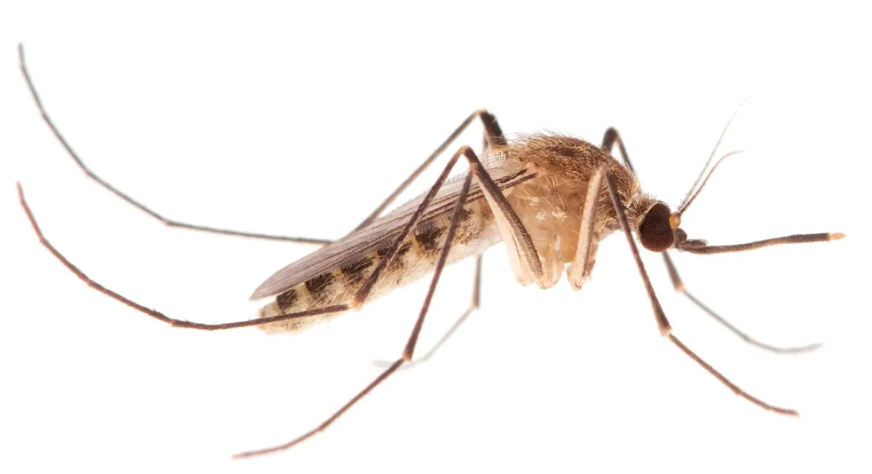Subway Mosquitoes: Ancient Origins Hidden Beneath Our Cities

Long before the London Underground was built, subway mosquitoes had already evolved in ancient Mediterranean cities. Discover how these resilient insects adapted to urban life thousands of years ago — and what their evolution reveals about humanity’s changing world.
The Hidden World Beneath Our Feet
Most people think of mosquitoes as outdoor pests — buzzing nuisances lurking near ponds and swamps. Yet, a particular kind of mosquito has thrived in an entirely different world: the dark, humid tunnels of city subways. These “subway mosquitoes,” once thought to have evolved recently within the London Underground, have now been traced back thousands of years to ancient Mediterranean cities.
This remarkable revelation overturns decades of assumptions about where these insects came from and how they adapted to human environments. Far from being a modern pest born of urban infrastructure, these mosquitoes are actually ancient survivors — witnesses to humanity’s long history of city building.
A Mosquito Unlike Any Other
The subway mosquito belongs to the Culex pipiens complex, a species group that includes some of the world’s most widespread mosquitoes. Scientists long believed that the “underground” version — Culex pipiens molestus — evolved recently, perhaps during the 19th or early 20th century, when massive subway networks like those in London, Paris, and New York were built.
Unlike typical mosquitoes, which depend on open water and warm climates, this underground variant adapted to an entirely different lifestyle. It breeds in stagnant underground pools, tunnels, and drainage systems, and — most surprisingly — it doesn’t need to hibernate. Traditional mosquitoes enter dormancy during winter, but subway mosquitoes remain active all year round, feeding on rats, pigeons, and even humans in the dark.
They’re smaller, more aggressive, and able to reproduce in tight, confined spaces — making them one of the most uniquely urban species on Earth.
The London Underground Theory
For decades, entomologists considered the London Underground to be the birthplace of this subspecies. The story began during World War II, when British scientists studying air raid shelters noticed unusually aggressive mosquitoes biting people sheltering underground.
These mosquitoes didn’t behave like normal surface-dwelling species. They bred underground, didn’t interbreed with surface mosquitoes, and were active during winter. The scientists concluded that these traits evolved within the sealed environment of the subway system — a striking example of evolution in action.
But recent genetic studies have now rewritten that story entirely.
Ancient Roots Revealed
A new international study led by researchers from the University of Florida and the University of Copenhagen used advanced genomic analysis to trace the evolutionary history of the subway mosquito. Their findings shocked the scientific community: the subway mosquito lineage didn’t originate in London at all — it dates back thousands of years, likely first evolving in ancient Mediterranean cities.
By comparing the DNA of underground mosquitoes from London, New York, Paris, and other cities with those from older populations in North Africa and Southern Europe, scientists found strong genetic links pointing to a common ancestor that predates modern urban infrastructure.
In other words, these mosquitoes were already adapted to underground living long before the first subway was ever dug.
How Ancient Civilizations Shaped Mosquito Evolution
Thousands of years ago, early cities like Rome, Athens, Alexandria, and Carthage were bustling centers filled with sewers, aqueducts, cisterns, and catacombs — perfect habitats for moisture-loving insects. The mosquitoes that thrived there likely began adapting to underground environments, feeding on rats, bats, and humans who worked or lived in these subterranean spaces.
Over time, these ancient mosquitoes evolved to survive without sunlight, breed in stagnant water trapped within stone tunnels, and persist through winter in temperate climates.
When industrial-age engineers later built modern subways, these insects didn’t need to evolve again — they simply moved in. The new tunnels were just a continuation of the underground ecosystems they had already dominated for centuries.
The Science Behind Their Survival
The subway mosquito’s genetic makeup shows distinct differences from its surface-dwelling relatives. Studies reveal changes in genes responsible for:
- Temperature tolerance: allowing them to remain active in cool underground climates.
- Reproductive behavior: enabling them to reproduce year-round, without relying on seasonal cues like daylight.
- Host preference: showing increased attraction to mammals, particularly humans and rodents.
- Isolation traits: preventing interbreeding with surface mosquitoes, a sign of long-term evolutionary separation.
These adaptations have helped the species spread globally through trade and travel, establishing underground colonies in cities as far apart as London, Tokyo, Moscow, and New York.
A Living Relic of Human Urbanization
What makes this discovery so fascinating is its broader implication: the subway mosquito is a biological record of urban history. Its DNA holds evidence of how insects adapted alongside humanity as we transitioned from ancient settlements to sprawling modern cities.
While we often see evolution as something happening in distant jungles or remote islands, the story of these mosquitoes shows that evolution has been happening right under our feet — inside the concrete arteries of civilization itself.
Global Spread and Modern-Day Presence
Subway mosquitoes are now found across major cities on nearly every continent. In London, they thrive in Tube tunnels and drainage chambers. In New York, they breed in subway puddles and abandoned basements. In Moscow and Tokyo, they are found deep underground where temperatures remain constant year-round.
They’re remarkably adaptable and can survive on the tiniest amounts of water. Even sealed underground environments with minimal oxygen exchange can support breeding populations.
Scientists warn that these mosquitoes could potentially transmit diseases like West Nile virus, though so far, outbreaks connected to subway mosquitoes are extremely rare due to their isolated underground lifestyle.
The Role of Climate Change
As global temperatures rise and rainfall patterns shift, mosquito habitats are changing rapidly. Warmer climates could drive surface mosquitoes deeper underground — where species like Culex pipiens molestus already have the advantage.
Researchers suggest that understanding how subway mosquitoes thrive in closed, stable environments could help predict how other mosquito species might adapt to changing climates.
This could even influence how we design future cities — taking into account the ecosystems that inevitably form beneath them.
What This Means for Science and Society
1. A New Model for Evolutionary Study
Subway mosquitoes provide a rare window into microevolution in human environments. They show how species can rapidly adapt to artificial ecosystems created by people — and then spread across the globe using human infrastructure.
2. Urban Ecology Insights
Urban ecosystems are often overlooked in conservation biology. Yet, creatures like these mosquitoes demonstrate how cities can serve as powerful evolutionary laboratories where new species traits emerge.
3. Public Health Implications
Understanding how mosquitoes adapt to enclosed environments could improve pest control strategies, especially in densely populated cities where traditional outdoor methods don’t work.
Expert Perspectives
Dr. Lawrence Reeves, an entomologist at the University of Florida and co-author of the study, emphasized that this discovery forces scientists to rethink the timeline of urban insect evolution.
“These mosquitoes didn’t evolve in subways — they evolved in ancient cities,” Reeves explained. “Human civilization provided the perfect setting for their adaptation thousands of years ago.”
Another researcher, Dr. Martina Nielsen from the University of Copenhagen, noted that the finding highlights the long-term coevolution between humans and insects. “As humans built cities, we created entire underground worlds. Mosquitoes were among the first to take advantage of that.”
Lessons from the Past — and the Future
The story of subway mosquitoes is a reminder that evolution isn’t always slow and remote. It can happen right in our cities, shaped by the way we build, live, and move.
From ancient Roman sewers to today’s subways, these insects have followed humanity’s path of progress, quietly adapting to every new layer of civilization.
As urbanization accelerates and climate pressures grow, it’s possible we’ll see more species evolve to survive in the hidden ecosystems of our built environment — from sewers to skyscraper vents.
In that sense, the subway mosquito isn’t just a relic of the past — it’s a preview of the future of life on a rapidly urbanizing planet.
Conclusion: Ancient Travelers Beneath Modern Cities
Far from being an accidental byproduct of 20th-century engineering, subway mosquitoes are ancient urban survivors, shaped by millennia of cohabitation with humans. Their resilience and adaptability reflect our own — both species building, expanding, and evolving through history’s shifting landscapes.
So, the next time you wait for a late-night train and feel a mosquito brush your arm, remember: it might not be a newcomer at all. It could be the descendant of a lineage that once haunted the tunnels of ancient Rome — living proof that nature and civilization have always evolved together, even in the shadows.
Internal Linking Suggestions:
- Link “urban evolution” to your Science & Environment section.
- Link “ancient Mediterranean cities” to a History or Archaeology category.
- Link “climate change and insect adaptation” to a Climate Science topic.
- Link “subway mosquito study” to a Genetics or Research News category.






